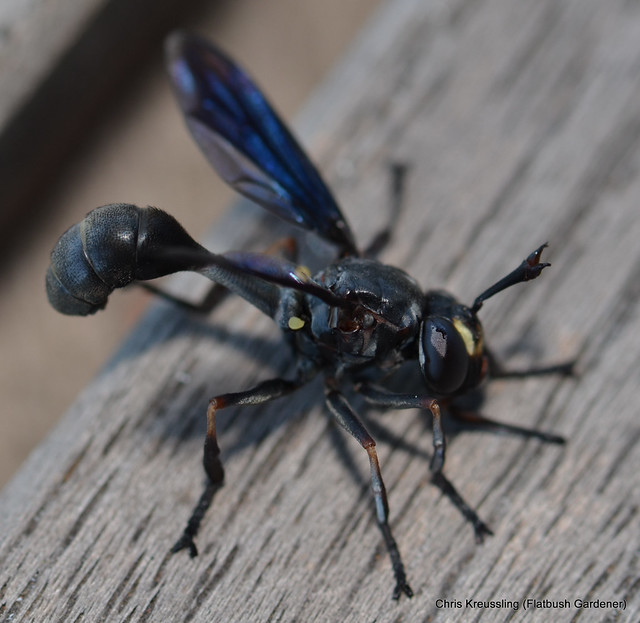A few weeks ago, I tweeted:
2013-06-11 19:57: Found - or rather one of our cats did - an incredible wasp-mimic fly. Chilling in refrigerator for later identification.This is what she found:
2013-06-11 20:01: The fly looks very similar to /Physocephala/
http://bugguide.net/node/view/7190/bgimage except all-black at first glance. Will examine more closely later.

Yes, that is a fly, not a wasp. You can tell it's a fly from the antennae in the center of the face, instead of the top of the head, the large, rounded eyes that cover both sides of the face, instead of being restricted to the upper part of the head, and the "forked" feet.




